Never Buy Succulents Again After Learning This Propagation Technique
Buying succulents can get expensive, but what if you could grow an unlimited supply for free? It’s easier than you think with this simple propagation technique! Follow along as we break it down step-by-step.
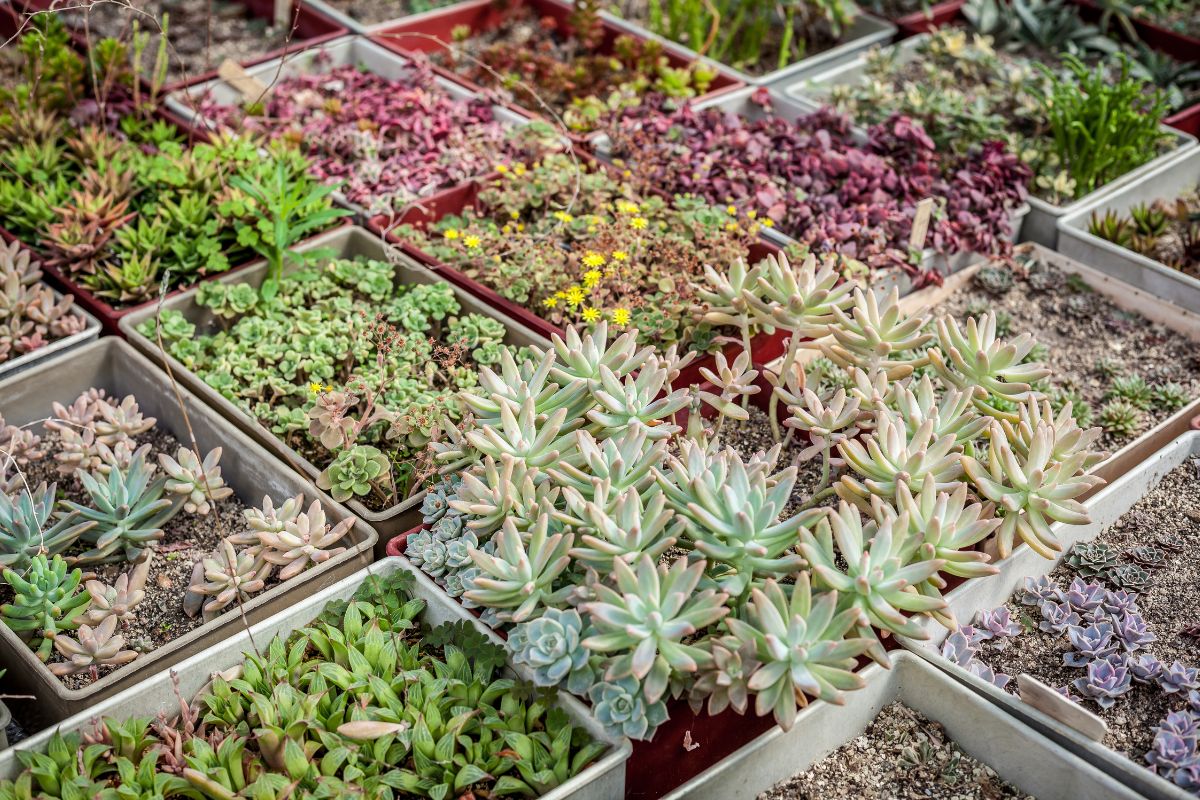
Even if you’re new to gardening, you’ll be able to multiply your succulent collection in no time. All you need are a few basic supplies and some patience. Pretty soon, you’ll be surrounded by tons of adorable baby succulents without spending a dime!
We’ll share all the insider tips and tricks, like how to create the perfect low-maintenance environment for your new plants to thrive. And don’t worry, we’ve made all the rookie mistakes already so you don’t have to. Get ready to become a succulent-growing master!
Contents
Propagating Succulents in Water
Propagation in water can be a debated method due to the risk of root rot and overwatering. However, with the right approach, it can be successful. Follow these steps to propagate succulents in water:
Cuttings
- Select a healthy stem cutting with a suitable length.
- Ensure only a small portion of the stem is submerged in water.
- Avoid fully submerging the cutting to prevent rotting and dirtying the water.
- Choose a container that is not too deep and allows visibility, like a glass container.
- Wrap cling wrap around the top of the container and poke small holes to secure the stem.
- Place the container in a well-lit area, but away from direct sunlight.
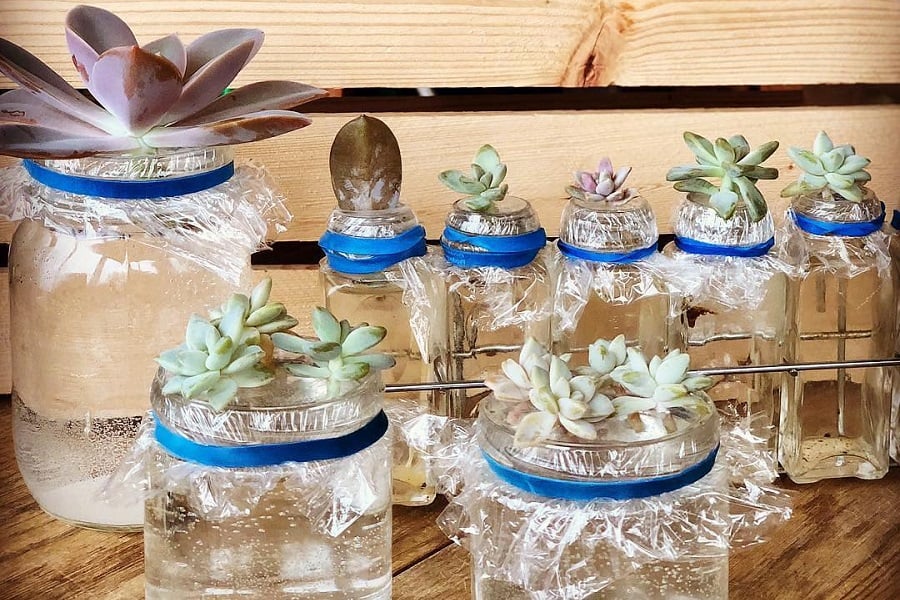
Leaves
- Ensure the leaf is healthy with a callus formed over the end where it was separated from the mother plant.
- Use a shallow container and cover it with plastic wrap.
- Cut appropriate holes in the plastic wrap for the leaves to rest without touching the water.
- Take extra care with leaves, as they are more prone to rotting.
- Keep the water clean and monitor for root formation.
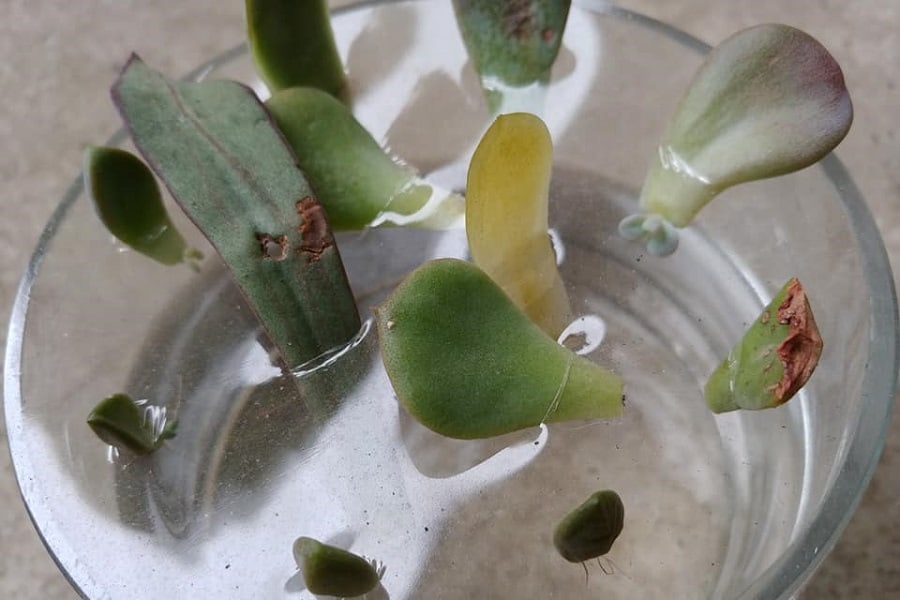
Maintenance
- Monitor the water clarity and change it only if it becomes very cloudy.
- Refill the water when it becomes too low.
- Mist leaves are placed on a paper towel daily, ensuring no signs of rot or excessive dirt.
- Be gentle while handling leaves and their delicate roots.
Potting
- Wait until your cutting or leaf has developed roots of at least one inch in length.
- Allow the roots to dry for a day or two before potting them.
- Exercise caution throughout the process to avoid damaging the fragile roots.
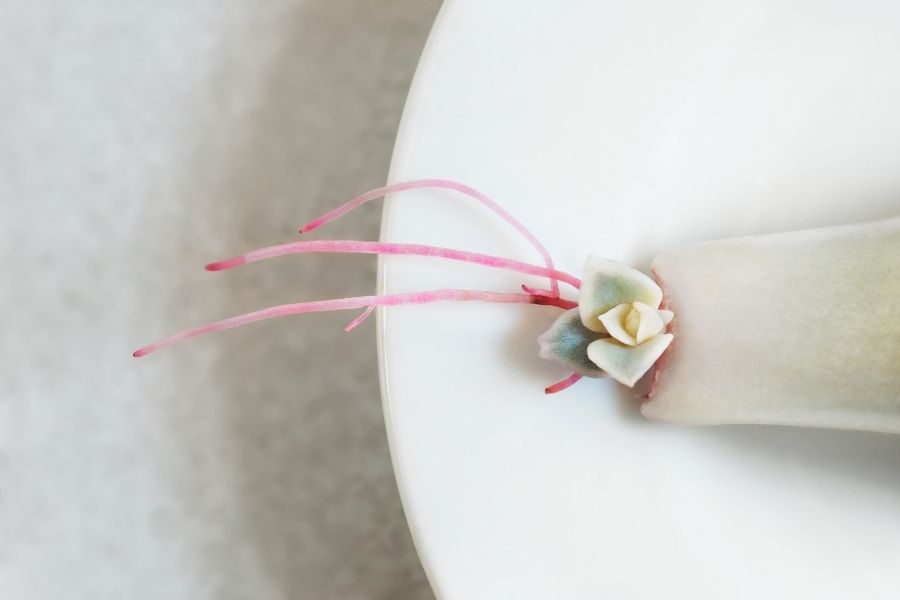
By following these steps, you can successfully propagate succulents in water. Remember, experimentation, patience, and careful handling are essential for achieving positive outcomes in succulent propagation.
Propagating Succulents in Soil
Propagating succulents in soil requires careful attention to watering and provides stronger, healthier plants once they take root. Follow these steps to successfully propagate succulents in soil:
Cuttings
- Prepare a cutting as discussed previously, ensuring it has a healthy stem tip.
- Find suitable soil for the new plant, different from what it will use as a mature plant.
- Plant the cutting tip carefully in the soil, avoiding overwatering.
- Spritz the soil with water once it dries, maintaining caution not to water too much.
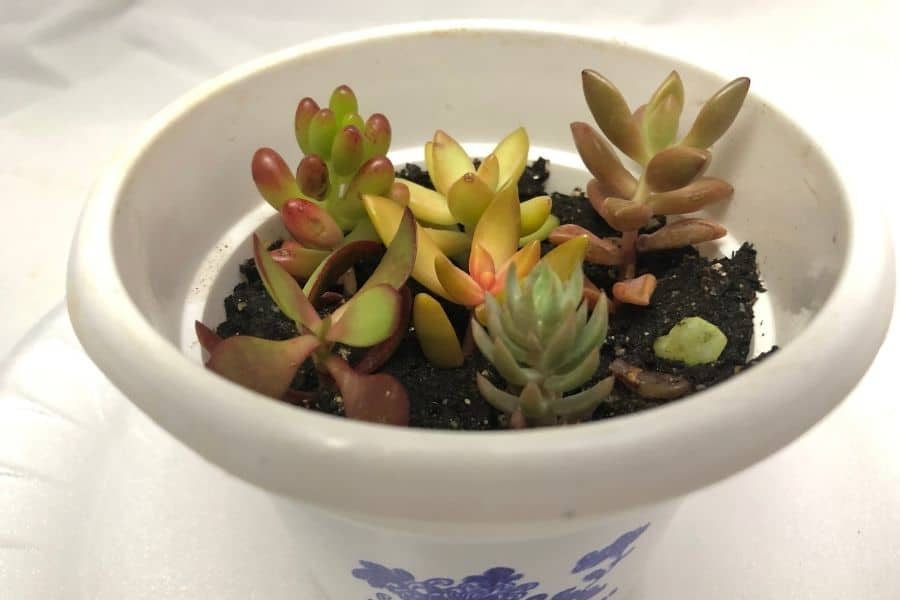
Leaves
- In most cases, leaves will naturally propagate when left outside near the mother plant during the summer months.
- Allow the leaves to sit for a few days until a callus forms at the tip.
- Select a pot or container and fill it with soil, making sure not to bury the leaf tips.
- Lay the leaves on top of the soil, allowing the roots to find their way into the soil independently.
- Spray the soil when the top layer dries, keeping the container in a bright location, away from direct sunlight.
- Expect initial root growth within 2-3 weeks.
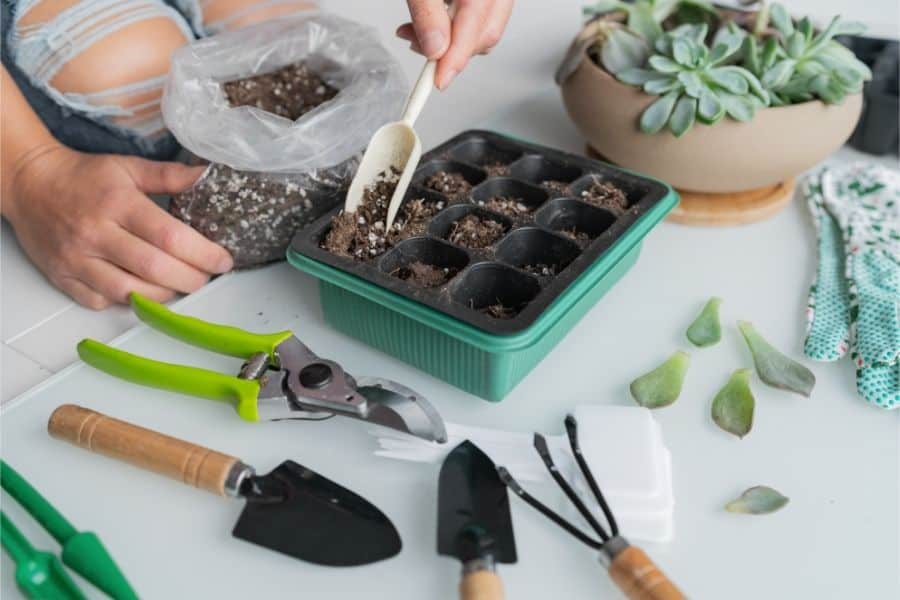
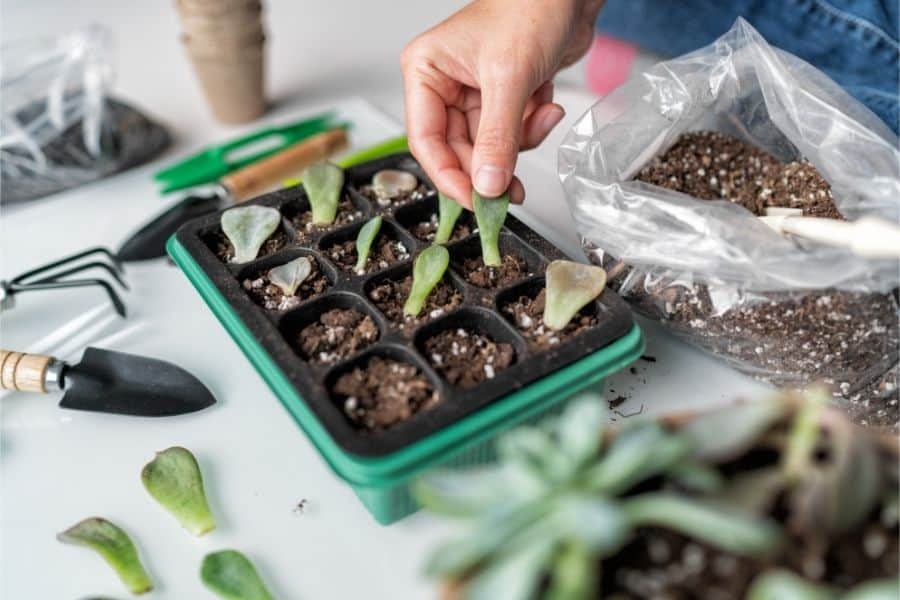
Potting
- As the propagated succulents are accustomed to the soil, they can be gently transplanted into new pots with appropriate soil.
- Look for coarse soil that drains well, preferably succulent soil, for these new plants.
- Assess the condition of the starter leaf; if it still exists, use your judgment to decide if it should be removed before repotting.
- Once transplanted, determine the watering schedule based on climate and plant type, aiming to follow the same approach as the mother plant.
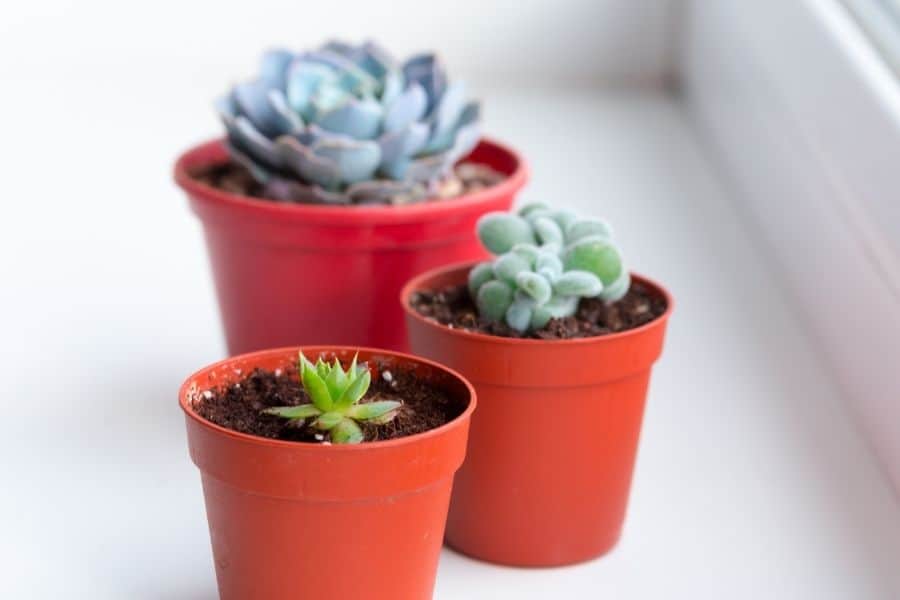
By following these steps, you can successfully propagate succulents in soil. Remember to provide adequate water and care during the initial stages, transitioning to a suitable watering schedule as the plants establish themselves.
4 Must-Know Tricks for Propagation Success
Ready to multiply your succulent stash? Before you get started, check out these tips that will help ensure propagation success!
1. Give Leaves and Cuttings Time to Heal
When you snip off a leaf or stem for propagating, it’s important to let the cut end dry out and form a calloused “scab” first. This takes around 2-6 days. Why’s it so crucial? That callus helps prevent rot once the cutting is planted. Don’t fret if the cutting looks a little shriveled during this waiting period – it’ll perk back up once it starts growing roots!
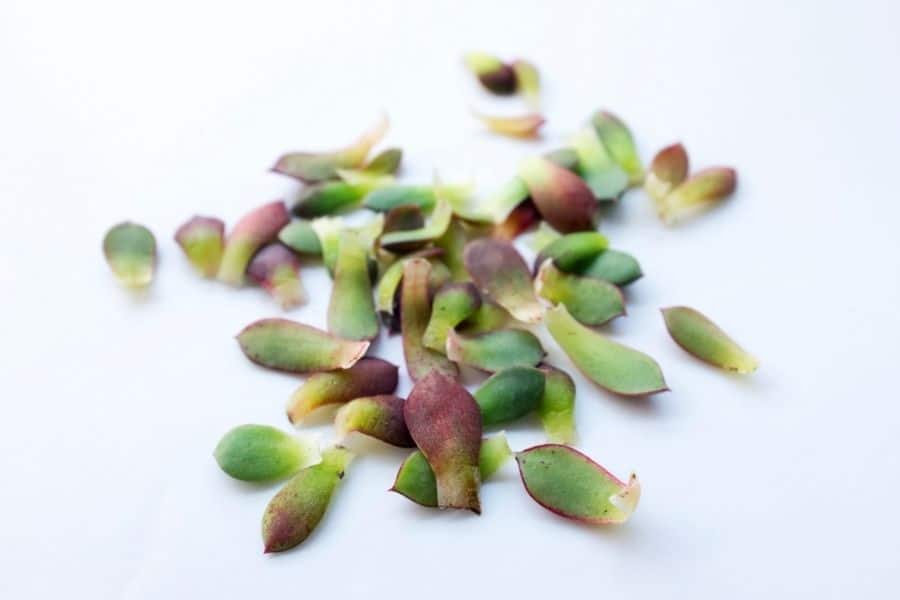
2. Consider Your Climate
Different succulents prefer different levels of heat and humidity for propagating. Do some research on your local climate to see if it naturally provides an ideal environment. If not, no worries! You may just need to make some adjustments like using a humid greenhouse setup. Propagating is usually easiest during the warm summer months.
3. Choose the Right Succulent Species
While you can try propagating almost any succulent, some varieties just take to it like pros. Popular picks like echeverias, graptoverias, and sedums are succulent MVPs that root easily for beginner propagators. Do a little homework on your plant’s specific propagation needs for the best success.
4. Provide Adequate Light and Space
Newly propagated succulents need plenty of bright, indirect light and room to spread their roots. A sunny windowsill or table works perfectly! Just make sure to give those delicate new plantlets about 2-6 weeks of undisturbed time before moving them. A little patience goes a long way for getting them firmly rooted.
Taking Cuttings from Succulents
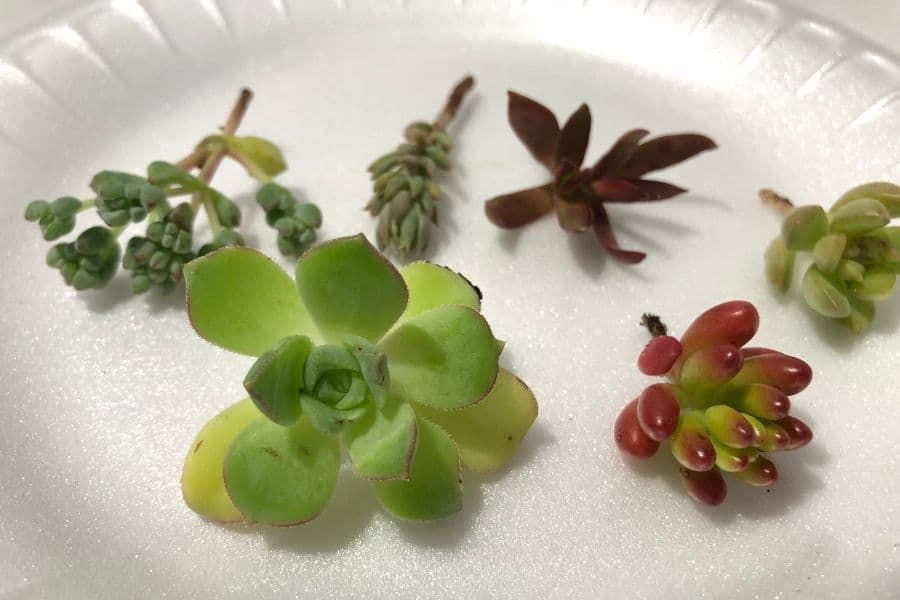
Sometimes, a succulent plant grows too tall or too big for its pot. In that case, you can take a cutting to make a new plant. Here’s how you can do it easily.
- Find clean and sharp scissors or pruning shears.
- Cut the stem just above a leaf or offshoot at the top of the plant.
- Make sure the stem still has several leaves on it.
- Let the cutting rest for a couple of days until the end of the stem becomes dry.
Taking the cuttings usually takes less time to grow because the stem and leaves are already established. It usually takes a couple of months for a cutting to develop roots and become a new plant. However, keep in mind that the time can vary depending on the type of succulent and how well the propagation process goes.
Taking Leaves from Succulents
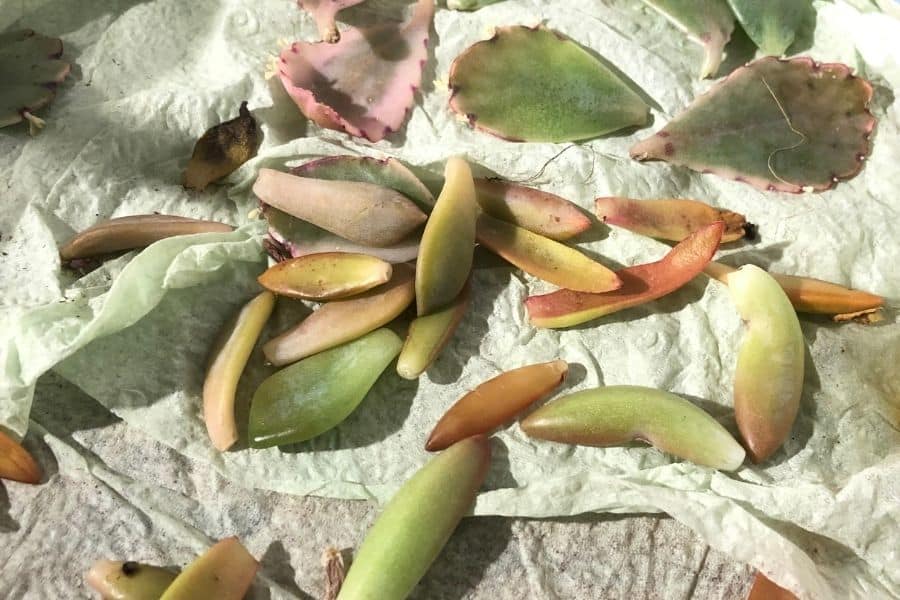
Sometimes, succulent leaves fall off naturally when you move or care for the plants. You can use these fallen leaves to grow new plants. Here’s how you can do it easily.
- Choose a healthy leaf from the bottom of the succulent.
- Gently twist the leaf to detach it completely from the stem.
- Let the leaf rest for a few days until a callus, a dry protective layer, forms where it was attached to the stem.
When you propagate from a leaf, you’re actually making an entirely new plant, which is pretty cool! This method gives you a higher chance of success. It may take a few months for the new plant to fully form, depending on the type of succulent. So, be patient and enjoy watching your new plant grow!
Where to Get Succulents
You can find succulents for sale in different places, making it easy to choose the ones you like. Here are some options:
Option 1: Large Stores
Big stores like Lowe’s, Home Depot, or Walmart have a wide selection of succulents for sale. You can actually visit these stores and see the plants in person. It’s like going on a shopping adventure for your new succulents! Plus, you can do some research beforehand by checking out their selection online.
Option 2: Online Shopping
If you prefer to explore your options and learn more about different succulents before making a decision, you can buy them online. There are websites where you can browse through various succulent plants, read descriptions, and check reviews from other customers. It’s like window shopping, but from the comfort of your own home!
Option 3: Local Nurseries
Supporting local businesses is a great idea, and local nurseries are no exception. These smaller, neighborhood plant stores often have their own unique selection of succulents. The best part is that the people working there are usually knowledgeable about the plants because they probably grew them themselves. You can get some expert advice and suggestions from them!
Bonus Tip: Leaf Collection
Sometimes, you might notice fallen leaves from succulents in the stores. If you’re interested in using these leaves to propagate your own plants, it’s a good idea to ask an employee for permission. However, I recommend sticking to big-name stores for this because they have a system in place to handle fallen leaves. In local places, it’s better to avoid taking leaves since they may not have a proper system to deal with them.
So, have fun exploring different options and choose the best place to get your new succulents!
Other Interesting Ways To Propagate Succulents
Final Thoughts
While succulent propagation requires a bit of patience, watching those first delicate roots sprout is an incredibly rewarding feeling. Don’t be discouraged if some cuttings don’t make it at first – think of it as perfect practice! The ones that do take off will grow into full, gorgeous plants before you know it.
Pretty soon, you’ll have a whole succulent nursery of your own! Can’t you just picture rows of adorably plump plant babies? The fun is sharing the bounty too. Propagated succulents make the cutest, easiest gifts to spread the plant love with friends and family.
Or keep that entire succulent squad for yourself – we won’t judge! After your first taste of propagation success, you’ll be thoroughly bitten by the succulent-growing bug. Just wait until you see how fast that initial plant or two multiplies into an entire compact garden. Trendy, low-maintenance, and essentially free? What’s not to love about that!
